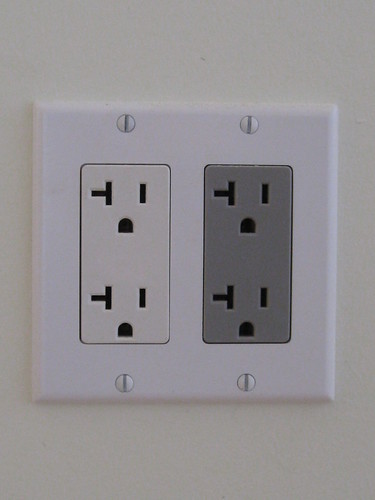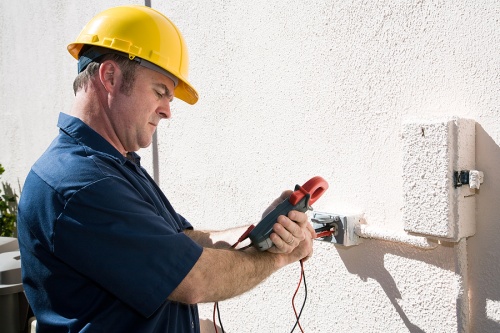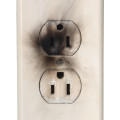Having child safe outlets will ensure that your children are safe from the dangers presented by the inevitable curiosity of when they ask, “what happens if I stick this inside of that little hole”?
Electrical outlets are found in every building in modernized countries. They’re the connection between your home or business’s electrical wiring system and your appliances, lights, and fixtures. They can also be a source of danger – especially if you have an electrical outlet in reach of small children.
Types of Electrical Outlets in Homes
You’ll find two main types of electrical outlets in the United States – the Type A and the Type B. The Type A is the traditional 2-prong outlet used to provide 120 volts of electricity.
While you are likely to find a Type A outlet in an older home, especially those built before the 70’s, it has generally been phased out and is no longer installed.
The Type B outlet was used to replace the Type A outlet. This familiar outlet requires the use of three prongs – two flat blades, like the Type A, along with a round grounding pin. One of the blades is wider than the other to ensure the plugs are inserted properly.
There are, of course, different variations on the Type B outlet and wiring. Most notable is the GFCI outlet, which is commonly used in bathrooms and kitchens to provide added protection. GFCI receptacles are commonly placed on their own circuits – so your bathroom and living room will not share circuits.
Protecting Your Children from Electrical Hazards
We all know how curious children can be when it comes to any object in the home. Your job is to teach them, at a young age, what is appropriate and what is not in terms of outlets and electricity in general.
Start by taking a look around your home. Identify all of the outlets and their placement and note which ones are not in use.
Have an electrician replace the standard outlets with child proof or tamper resistant outlets. The child proof or tamper resistant outlets have a special mechanism inside that close off the contact openings, or slots, of the receptacles preventing your child from inserting something dangerous into one of the holes.
If having all of your outlets in your home replaced with tamper proof outlets is not in your budget, add safety caps instead. Safety caps can be inserted into any unused outlet in your home. This will benefit you in two ways.
Your child won’t be tempted to place his fingers or any other item in the outlet, and you’ll also help to prevent drafts in your home.
Your next step is to set a good example. Children learn by watching and if they see you treating power cords and outlets carelessly, they’ll simply imitate your behavior.
Try not to work with your wiring or outlets while your young children are around.
If this can’t be helped, make sure you are always unplugging cords properly at the base and not by yanking them from the wall – a technique that can cause damage in more ways than one.
Talk to your children about asking for help whenever they want to use a toy or appliance that calls for the use of electricity.
Teach your child to ask for help so that you can remove safety caps and plug in the toys yourself – and make sure you are the one who unplugs them after play as well.
Make sure your child sees you replacing the safety cap and explain that they are there to keep everyone safe.
Children are bound to test the boundaries you place for them in all aspects of life, but make sure they know how dangerous an electrical outlet can be if not treated properly. In addition to your guidance and teaching, making sure you have child safe, tamper-proof outlets will add peace of mind.







